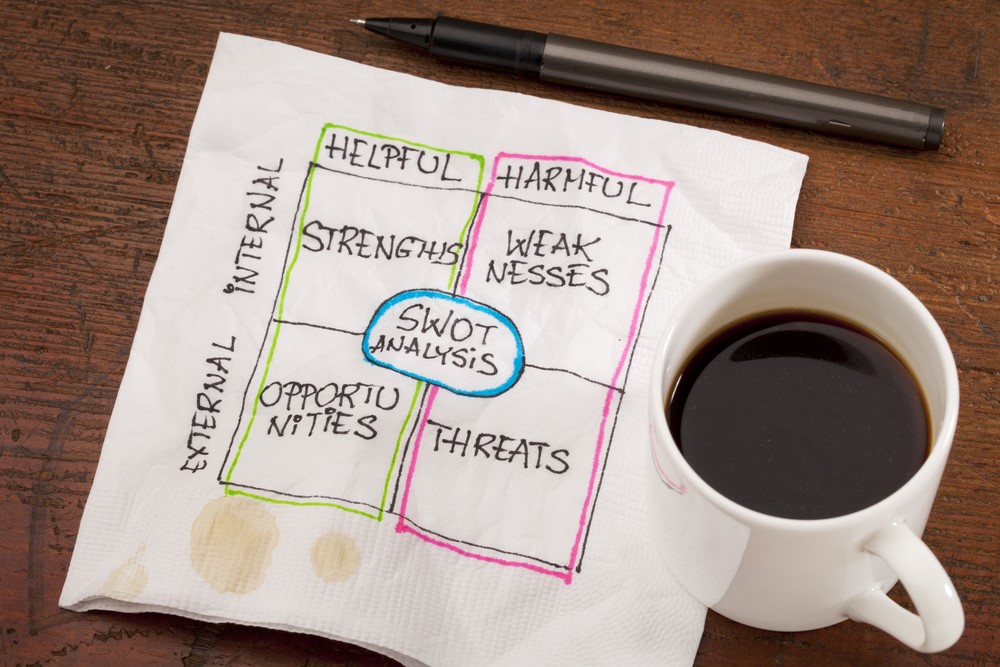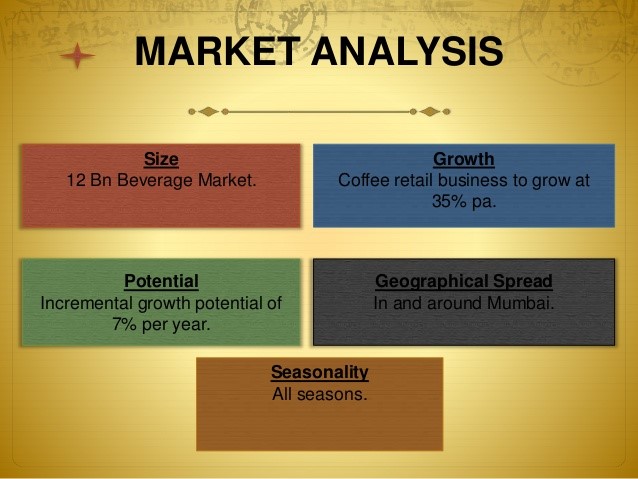You can only start to market your business and products effectively when you have a marketing strategy in place to do so. This might seem a daunting task.
However, when you have a marketing strategy template to guide your progress, your small business success is only a few steps away.
So, let’s get started!
Follow our 5-step process to develop a marketing strategy template that will work for your business.
What is a Marketing Strategy?
Your marketing strategy is an explanation of the goals you need to achieve with your marketing efforts. It’s the overall position your business will adopt in the market.
Each marketing tactic you use should be 100% focused on reaching and surpassing these strategic marketing objectives.
Developing a marketing strategy template can help you define and revise your strategy overtime.
1. Define Your Goals
A marketing strategy involves choosing realistic, measurable and ambitious marketing objectives that you think your business can achieve on a sustainable basis.
When developing a marketing strategy, you need to define your marketing goals, such as growing inbound web visits, capturing leads or increasing sales.
Make sure your marketing goals and business goals align.
Typically, SMEs business goals will include some or all of the following:
- Grow market share.
- Increase sales.
- Increase transaction size.
- Launch new products or services.
- Increase frequency of purchase.
- Build brand awareness.
- Increase profit.
| Business Goals | Marketing Goals |
|---|---|
| Increase sales: • Increase number of customers. • Increase the transaction size. • Increase the purchasing frequency. | Target new customers: • Use SEO to help users find you on Google. • Increase website traffic to your product pages. • Paint a picture of life with your product(s). |
| Build brand awareness | Position your business as an industry thought leader by: • Publishing relevant content on your business blog. • Guest blogging on influencer websites. • Publishing relevant research studies in the form of white papers. |
Based on these goals you must decide on the best marketing strategy to reach them.
2. Understanding Your Strengths and Weaknesses
A simple SWOT analysis is a great start to creating your marketing strategy.
It creates a grid for you to work from.
Strengths:
- What advantages does your business have?
- What do you do better than anyone else?
- What problem(s) do you solve?
Weaknesses:
- What could you improve?
- What factors lose you sales?
- What should you avoid?
Opportunities:
- What interesting trends are you aware of?
- How can technology provide you with new opportunities?
- What good opportunities can you spot?
Threats:
- What barriers to entry do you face?
- What are your competitors doing?
- Do you have debt or cash-flow problems?

Image Source: businessnewsdaily.com
Here’s an example of a SWOT analysis done on a small business coffee shop:
Strengths
- The company has a long-standing reputation and brand.
- Current facilities and equipment for coffee brewing, storage and dispensing are excellent.
- This includes an extensive structure for display and sale of bulk beans.
Weaknesses
- The brand value has sustained some damage with the recent temporary closure and poor management.
- Current product offering is limited to beverages and light meals. But the facilities for sale of beans and confectionery are glaringly empty.
- Beverages currently served are not distinguishable from those served at any other establishment in town.
Opportunities
- The establishment has a history of having sold bulk coffee beans to private homes and small enterprises. This market can be recaptured with careful planning and promotion of products available.
- Bulk coffee sales can be a very good source of revenue.
- Only one other outlet in town sells bulk beans, and the variety stocked is very small.
- Securing expert coffee brewers/barista will enable the shop to offer excellent coffee products with wonderful presentation.
Threats
- Efforts by competition to secure similar levels of quality and expertise.
- Competitors opening retail sales of bulk beans from opposing suppliers.
3. Identify Your Target Market
One of the core components of a good marketing strategy template is focusing on your consumer and his or her specific needs. And we’ve got the perfect blog post to help you do just that. Take a look here.
Not all consumers are created equal; they don’t have the same needs and desires.
We’ve put together a Target Market Assessment Tool, based on 12 years of experience in helping small businesses grow.
Use this tool below to identify segments or groups with similar needs so that your marketing efforts can be targeted to them.
| Grow's Target Market Assessment Tool: Identify Your Ideal Customer | |
|---|---|
| What problems are your customers’ trying to solve? | |
| What is the depth of their pain and frustration? | |
| How do these people currently solve their problems? What products or services do they use at the moment? | |
| What key value and benefits do you currently offer these customers? | |
| How easy is it to reach these customers? | |
| What is the length of the sales cycle? How long will it take from the first enquiry to a completed sale? | |
| How and where do these people get information to inform their purchasing decisions? | |
| What marketing methods are best for reaching this target segment? | |
| Profitability: What is their budget? What is their repeat purchasing potential for your product or service? | |
| What is the cost of obtaining this lead? | |
By identifying your market segments you are able to more clearly determine the way your business will communicate with your audience.
Each segment will require different communication channels at different times.

Image Source: Shortlist.com
4. Market Research
While market segmentation focuses on consumers as individuals, market research takes a broader view of potential consumers to include market sizes and trends.
Market research should also include an analysis of your competition, so you know where your business stands in the overall marketplace.
Use market research to map your consumer markets’ perceptions of competing brands in relation to attributes they consider important in determining value.
You can then see major threats to your brand as well as the different directions in which they could move.
There are no single set of steps in a market research procedure that is accepted by everyone.
However, four major activities should be performed:
- Making a preliminary investigation. You need to determine the purpose and scope of your research. Then become comfortable in the problem setting by launching an unstructured search of the marketing environment. In order to clearly identify the problem you need to create a set of research questions.
- Creating the research design. This is the plan proposed to test the research questions. Determine the types of data needed. Locate the sources and choose your method of collecting the data.
- Planning the sample. Use a small part of the population to make up your sample. They must be representative of your segmented audience. Now, from this sample, gather the facts to be used in solving your problem. Data has now been collected.
- Processing the data. Now you must convert the collected data into a format that will suggest answers to the initially identified problem.
- Formulate a conclusion. Interpret the information and draw a conclusion.

Image source: Slideshare
5. Your Unique Selling Proposition
The last step to building a marketing strategy template is to find your Unique Selling Proposition (USP).
Securing a major and distinct competitive advantage over other players in your market requires a differentiation of offer that will be sure to lure customers away from your competition.
Think about how you’ll position your product/service as offering a unique benefit, one not provided by your competition.
You must incorporate your USP into everything you do. Possible USPs include:
- Broadest choices or best selection of products/services.
- Lowest price.
- Highest quality.
- Exclusivity.
- Keeping your promises.
- Be Transparent. Explain how and why you do things.
Extend your USP by frequently offering promotions and specials to existing clients.
Everyone wants to know they’re appreciated and acknowledged.
You need to find the benefit to your customer only you can provide. Your uniqueness must be relevant to your customer as well as beneficial to your business. Educate prospects to appreciate and seize your provided advantage.
For example, what makes your coffee shop unique is its wide variety of wholesale beans, each with its own history depicted on your shop walls.
Conclusion: Your Turn to Build Your Own Marketing Strategy Template
Summarise your market’s position and goals, understand your business strengths and weaknesses and identify your target market.
After these three steps are completed, you need to delve deeper into your competition and research your position within the market.
Lastly, determine what makes your business unique.
After you’ve completed this 5-step process you should be able to develop your marketing strategy template.
You’ll be able to see where a need for your product or service exists, what you competition is doing to fulfil that particular need and what you can do to differentiate yourself from the competition.
Let us know how you get on, leave a comment below.
Discover
The 12 Marketing Secrets of Fast-Growth Companies
Find out what they do to achieve outrageous business success

Get your free copy

 By
By 

Post a Comment
You must be logged in to post a comment.